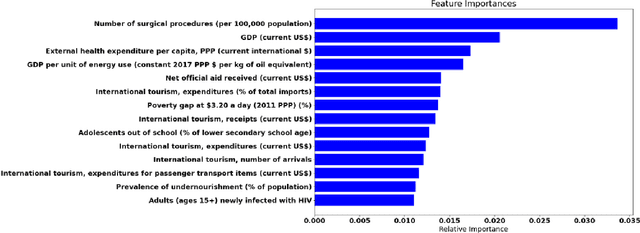Investigating the Relationship Between World Development Indicators and the Occurrence of Disease Outbreaks in the 21st Century: A Case Study
Paper and Code
Sep 20, 2021


The timely identification of socio-economic sectors vulnerable to a disease outbreak presents an important challenge to the civic authorities and healthcare workers interested in outbreak mitigation measures. This problem was traditionally solved by studying the aberrances in small-scale healthcare data. In this paper, we leverage data driven models to determine the relationship between the trends of World Development Indicators and occurrence of disease outbreaks using worldwide historical data from 2000-2019, and treat it as a classic supervised classification problem. CART based feature selection was employed in an unorthodox fashion to determine the covariates getting affected by the disease outbreak, thus giving the most vulnerable sectors. The result involves a comprehensive analysis of different classification algorithms and is indicative of the relationship between the disease outbreak occurrence and the magnitudes of various development indicators.
 Add to Chrome
Add to Chrome Add to Firefox
Add to Firefox Add to Edge
Add to Edge